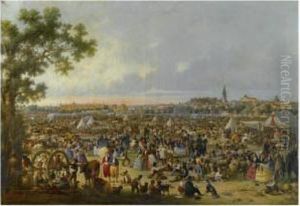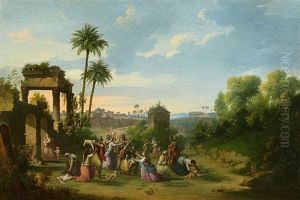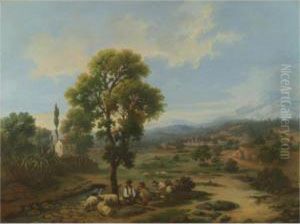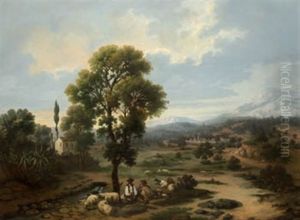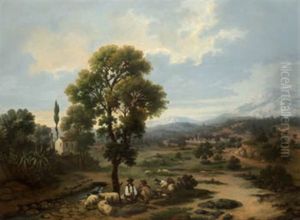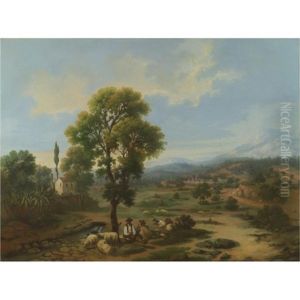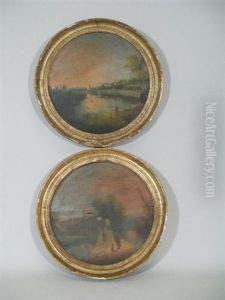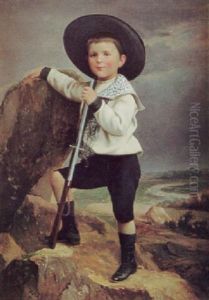Rafael Romero Y Barros Paintings
Rafael Romero y Barros was a notable Spanish painter born on February 15, 1832, in Cordoba, Spain. He was a prominent figure in the art world during the 19th century and is known for his contributions to the romantic and costumbrista (genre painting) traditions in Spanish art. Romero y Barros' work often depicted scenes of everyday life, capturing the customs, culture, and traditions of the people of Spain, particularly those from his native region of Andalusia.
Romero y Barros received his initial training from his father, Antonio Romero, who was also a painter. He furthered his studies at the School of Fine Arts in Cordoba and later at the Royal Academy of Fine Arts of San Fernando in Madrid, where he honed his skills under the tutelage of distinguished artists of the time. His education exposed him to various artistic styles and techniques, which he incorporated into his own work, creating a distinct blend of realism and romanticism.
Throughout his career, Romero y Barros enjoyed considerable success and recognition. He participated in numerous national and international exhibitions, earning accolades and awards for his paintings. His works were well-received for their attention to detail, use of color, and ability to convey the character and spirit of his subjects. Many of his paintings focused on the landscapes, folklore, and people of Andalusia, which he portrayed with great affection and authenticity.
Romero y Barros also played a significant role in the cultural life of Cordoba. He was a founding member of the city's Artistic Society and served as the director of the Museum of Fine Arts of Cordoba. His influence extended beyond his own artistic practice, as he was a respected teacher and mentor to the next generation of Spanish artists.
Rafael Romero y Barros passed away on October 14, 1895, in his hometown of Cordoba. He left behind a rich legacy that continues to be celebrated in Spain. His works are preserved in various museums and private collections, where they remain a testament to his skill and dedication to capturing the essence of Spanish life in the 19th century.
